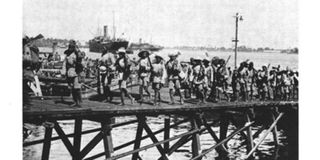Africa has never had an original economic model

In the 1960s, when most African nations were gaining independence, the subject of economic growth was still cloudy – academia was full of theories but few case studies. So, leaders experimented with untried economic ideas, often ending up with calamitous results. However, today, given the multitude of nations which have succeeded and failed, poverty is now a choice.
The success of the Asian tigers – Singapore, Taiwan, Hong Kong, and South Korea, nations which sustained exceptionally high economic growth rates from the 1960s to the 1990s – has usually captivated the world’s attention, but little is usually said of nations which achieved the opposite, nations such as Russia, Cuba, Venezuela, Zimbabwe, North Korea, etc.
Focusing on Cuba, there is nothing that can be said about that Caribbean nation that’s boring – its short history is action-packed from the beginning to the end. But one landmark event towers over all others – the 1959 revolution that was led by a young man called Fidel Castro. The revolution became a major turning point – separating the pre- and post- revolution eras.
Before the revolution, Cuba’s economy was thriving. It was the largest producer of sugar in the world. American tourists were rushing to its sandy beaches, thanks to its proximity to the US. And all that money also attracted the unsavoury Mafia elements, which had interests in Cuba’s popular casinos. But, generally, Cuba was among the top performers in Latin America in GDP per capita, healthcare, education, telecoms, etc. For example, when Cuba’s GDP per capita was $2,300, Argentina’s, Uruguay’s, and Chile’s were around $1,150, 480, and 500, respectively.
Then arrived Comrade Fidel Castro with his gang of adrenaline junkies led by Dr Che Guevara! They had ‘original’ ideas and changed history, consequently turning Cuba’s relationship with the US sour.
Now, probably Fidel had good some good intentions. After all, he was the man who routed racist South Africans from Angola, but the man was also a treasure trove of bad ideas. As early as 1959 he declared Cuba an atheist state and later banned Christmas! Imagine that.
But Fidel made a great miscalculation when he nationalised American assets in Cuba – worth about $12 billion today. The justification was that the economy was mainly owned by foreigners, with locals working as labourers. Critics will argue that workers’ compensation was better than in Switzerland, German and Australia.
The US was not amused, and it slapped trade sanctions on Cuba. Moreover, it moved to remove Fidel from power, a policy which led to the Bay of Pigs fiasco in 1961.
For Fidel though, standing against a superpower 80km away was stressful, so he turned to the USSR. One thing led to another, and the world came perilously close to a nuclear war in 1962. Had the Soviet commanders decided to follow their orders and push through the American naval blockade – that could have unleashed a nuclear inferno. Sound minds prevailed.
But Cuba’s economy went on a downward spiral afterwards, becoming increasingly dependent on the USSR and, when the latter collapsed in 1991, its GDP contracted by 35 percent. Today, while the situation has improved, many Latin American nations have leapfrogged Cuba economically. For example, in 2018, when Cuba’s GDP per capita had crawled up to $8,800, Argentina’s, Uruguay’s, and Chile’s were at $11,600, $17,300, and $15,900, respectively. In other words, other economies grew 2.5, 8, and 9 times quicker!
A question is usually asked – who is to blame for that, Fidel or the US? It is Fidel of course. It is his choices which led to the blockade. But what if there was no blockade? Several studies have compared Cuba’s economic performance with and without the embargo, and all of them conclude that the revolution has had a negative effect on Cuba. In other words, the people of Cuba would be doing much better today had Fidel not appeared on the scene.
This is by no means a secret – immediately after the revolution Cubans started leaving the archipelago, and the government had to introduce exit visa restrictions to limit the exodus. When you have to force people to stay, that’s all that needs to be said about your performance as a leader.
So, where did Fidel go wrong? Almost everything. To mention a few: one, centrally planned economies don’t work: weaken the private sector at your peril. Two, capitalise on the nation’s competitive advantages. Costa Rica, 3,200km south of the US, has successfully integrated its economy to the US, doing what Cuba was best positioned to do, and seeing its economy growing eight times faster than Cuba’s. Three, being rogue doesn’t pay – be predictably sound. Four, low-income nations need FDIs to grow – never ever close doors to FDIs. Five, diversify the economy – depending on one export product is risky. Finally, it’s foolish to sacrifice growth for political expediency. Exceedingly foolish.
In answering the question, ‘Why is Africa Poor?’ the author Greg Mills, PhD, said that Africa is poor because its leaders have made that decision. Poverty is now optional.
Unfortunately, we will always have geniuses who believe what their thoughts are original – not knowing that their experiments have been tried and ended in failure over and over again. Sadly, those leaders are choosing failure for their nations.
Economic growth doesn’t need improvisation today. Just follow the script.



